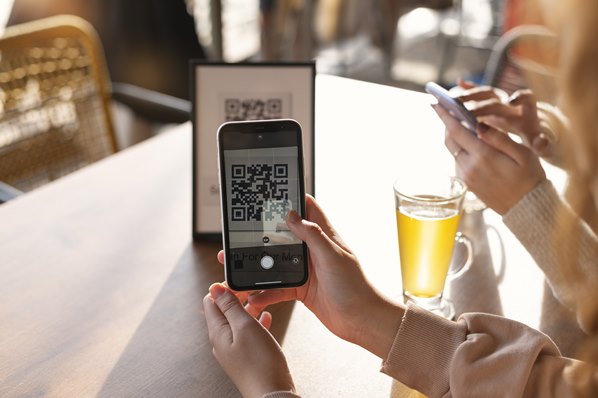
Quick Response (QR) codes have emerged as a convenient bridge between offline and online customer experiences.
Originally designed for tracking parts in the automotive industry, QR codes have evolved far beyond their initial purpose. Retail businesses and service industries are now using these pixelated squares to provide exceptional service to their customers in innovative and efficient ways. Let’s take a look.
- Instant Feedback Collection
Rather than relying on customers to visit a website and fill out a survey, businesses can use QR codes to solicit immediate feedback on products or services. For example, a restaurant might display a QR code on a receipt or table tent, directing patrons to a brief satisfaction survey. According to a study by Bain & Co, companies that excel at customer experience by listening to feedback grow revenues 4 to 8 percent above their market.
- Contactless Payments
Cashless transactions have spiked in usage due to health concerns and convenience. QR codes allow customers to pay for their purchases without physical contact, making checkouts faster and safer. For instance, Walmart introduced Walmart Pay which uses QR codes to streamline the payment process.
- Access to Product Information
QR codes on product packaging can connect customers to a wealth of information in an instant. They can view product demonstrations, usage instructions, or detailed material and sourcing information, enhancing transparency and trust in the brand. A band that does this very well is L’Oreal’s La Roche-Posay, who uses QR codes to educate customers about skin safety and product efficacy.
- Loyalty Programs
Instead of carrying multiple loyalty cards, customers can scan a QR code to check-in, accrue points, or redeem rewards. This tactic not only saves wallet space but also encourages customer loyalty by simplifying the experience. For example, Starbucks’ Mobile Order & Pay feature integrates QR code scanning for a seamless loyalty program experience.
- Real-Time Product Availability
Retail brands can deploy QR codes throughout stores or on window displays to inform customers about the availability of products, sizes, colors, or alternative models. This feature ensures customers can easily find or order what they need without unnecessary wait times.
- Easy Access to Customer Support
A QR scan can immediately connect a customer with a support chatbot or the customer service department, minimizing search time and frustration. For example, Best Buy uses QR codes in-store to provide customers quick and easy access to product support.
- Interactive User Manuals
Gone are the days of lengthy, paper-based user manuals. QR codes can link customers to interactive digital manuals, how-to videos, and troubleshooting guides, streamlining product use and maintenance. Tesla uses this method to provide owners easy access to instructional videos and vehicle information.
- Warranty Activation and Product Registration
Retailers and manufacturers can streamline warranty service by embedding QR codes in products for easy registration. Customers can activate their warranty and register their products as soon as they make a purchase, eliminating forgetfulness or manual errors.
- Augmented Reality Shopping Experiences
Businesses can enrich shopping experiences by integrating QR codes with augmented reality (AR) tools. For example, IKEA’s AR app “IKEA Place” uses QR codes to allow customers to visualize how furniture will look in their homes before making a purchase.
- Tailored Recommendations and Offers
Analytics from QR code scans can help businesses understand customer preferences and behaviors, enabling them to provide personalized recommendations and offers.
From improving payment methods to offering tailored product information and support, QR codes are transforming how businesses engage with their customers in both the retail and service industries. Companies that adopt QR technology demonstrate a commitment to innovation and customer convenience, setting themselves apart in the competitive landscape of customer service.




